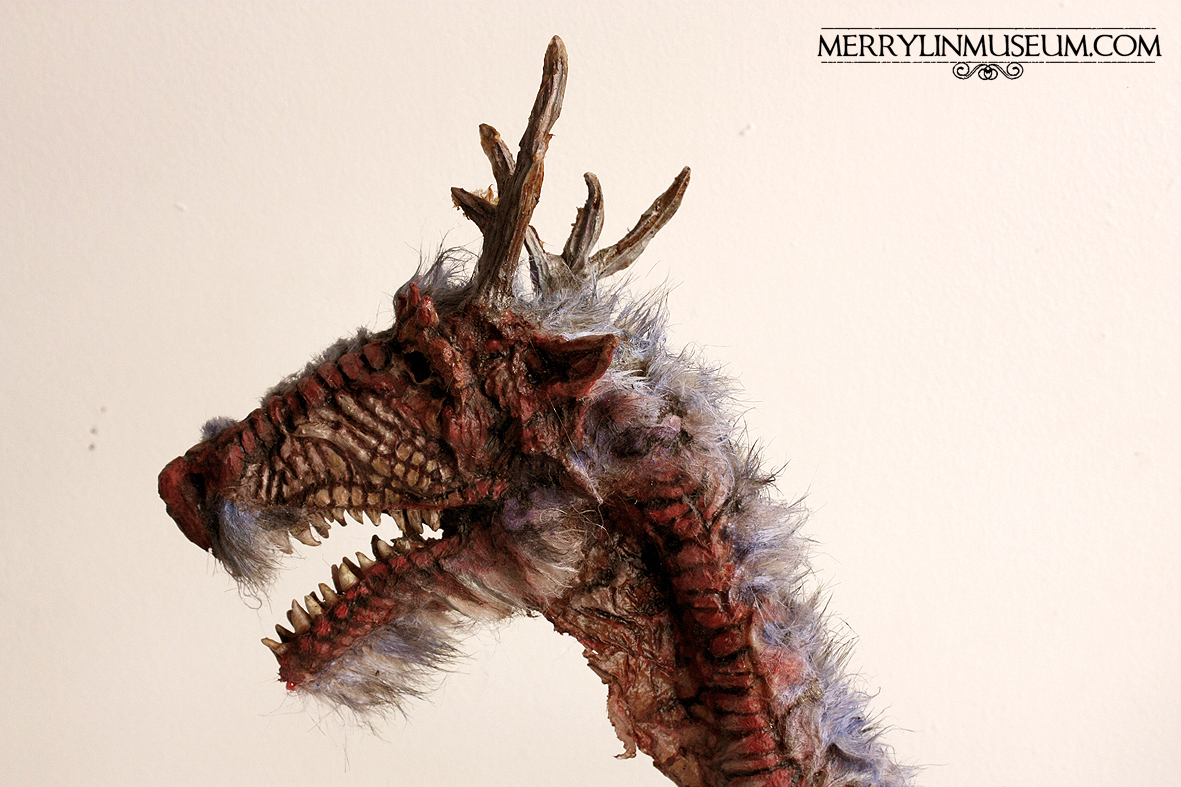All images copyright Alex CF 2014. Please credit and attach a link if used outside this website.
Draco Fluminis
Quadruped, Therapsid , Carnivore
The term “Dragon” and the species “Draco” applies to Draco Alatus and Draco Minor, although due to the plethora of mythology surrounding dragons, many species who share various physical attributes are also associated with this species. It is also important to mention that surviving populations of the aforementioned Draco were still alive in isolated populations in the Nepalese mountains. Sightings of these individuals may have influenced far eastern mythology.
Throughout history there have been examples of species whose evolution appears to halt, many species of Reptile and fish such as the coelacanth remain unadapted for millions of years, the left behind members of species who continue to re-imagine their anatomies over countless millenia. One such individual is Draco fluminis, a subspecies of reptilian mammal. Their relatives would eventually evolve the plethora of mammalian descendants we see today. They share the monicker “Draco” although they are considered a separate species.
This member of the Therapsid family was found mostly in the far east and are poignant symbols within Chinese culture, representing the Yin to their yang, which is often attributed to the Phoenix. Both species were immortalized in cultural practices. Ancient excavations of dinosaur bones deified the then living examples of this species, and thus a symbiotic relationship arose. It is believed that prehistoric ancestors of modern Draco Fluminis were much larger.
Sharing many mammalian and reptilian traits, Draco Fluminis was an egg laying, nest building animal which could always be found near a water source.
Draco Fluminus was domesticated around the year 2697 BC, during the reign of the Yellow Emperor, Huangdi. These smaller animals were easily tamed, feeding mainly on fish from local rivers. They behaved similarly to wolves, and domestication was a gradual process. The Draco who stayed close the human populations benefited from the scraps they no longer had to hunt for. Over few generations, Draco Fluminis became a vibrant addition to a burgeoning culture, acting as guardians of families and livestock.
From the little research that has been carried out we can ascertain that this species developed similar genes to domesticated dogs, in a stark contrast to their relatively unchanging anatomy before encountering humans, mutations in body form happened much more regularly than most species. Short snouts, enlarged teeth, dramatic pigmentations and various other aesthetic mutations were common within relatively few generations. There were nine distinct breeds of Draco Fluminis, an important number within Chinese culture. This was strictly adhered to, although feral animals often bred with wild Draco, forming various new lines.
Whilst these colourful miniature animals played an important role in cultural practices, their long extinct relatives were seen in a different light, with beautiful and intricate depictions of monstrous beasts coiled around artwork and carried a great deal of mystical significance.
The animals fell out of popularity with the advent of the first Dynasty, although the ancient, long extinct ancestors of these bizarre creatures remained forever important.









